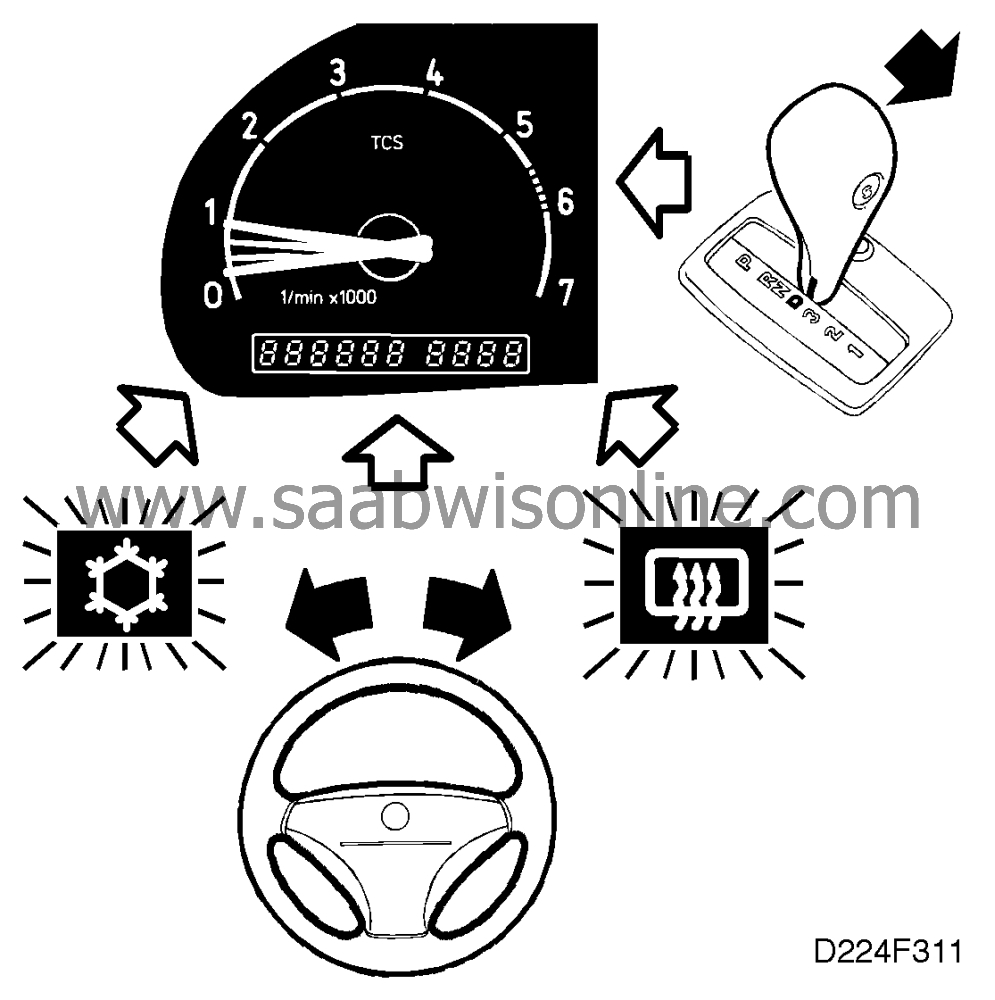Dips in idling speed and engine rpm
|
|
Dips in idling speed and engine rpm
|
Symptom of fault
Idling speed drops drastically when the engine has to cope with a sudden load demand
in connection with the engagement of high-current electrical equipment such as the A/C, ACC,
power steering, electrically heated rear window or, on cars with automatic transmission,
selection of a gear position.
Conditions
No diagnostic trouble codes.
Diagnostic procedure
1. Check for air leakage
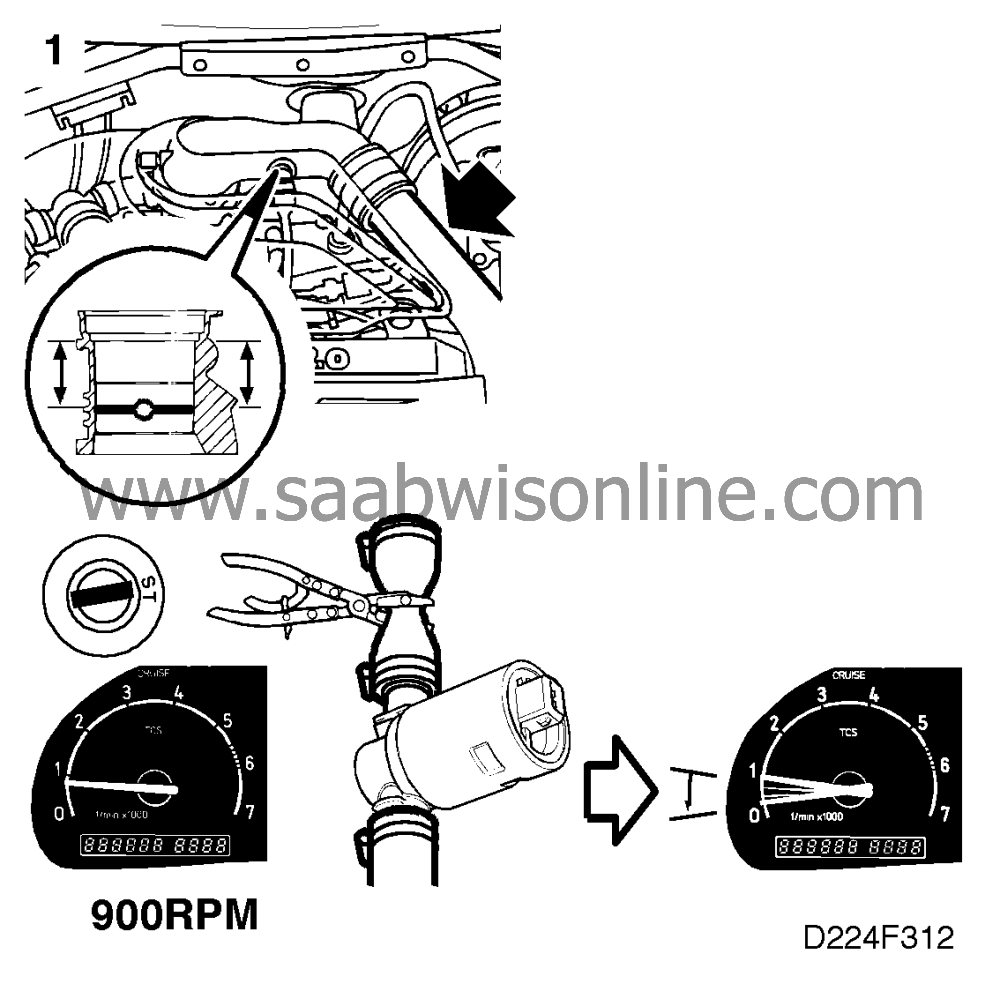
|
-
|
Start the engine, warm it up and
then run it at idling speed.
|
|
-
|
Constrict the flow of air through the
idle air control valve by pinching off the air hose using a pair of pliers. Do not restrict the flow
of air so much that the engine stalls.
|
Idling speed should drop drastically.
Has engine speed dropped?
Continue with point 2.
Continue fault diagnosis by checking:
• poorly adjusted throttle
• Air leakage (after throttle)
Rectify as necessary and continue with point 6.
2. Check idle speed control operation
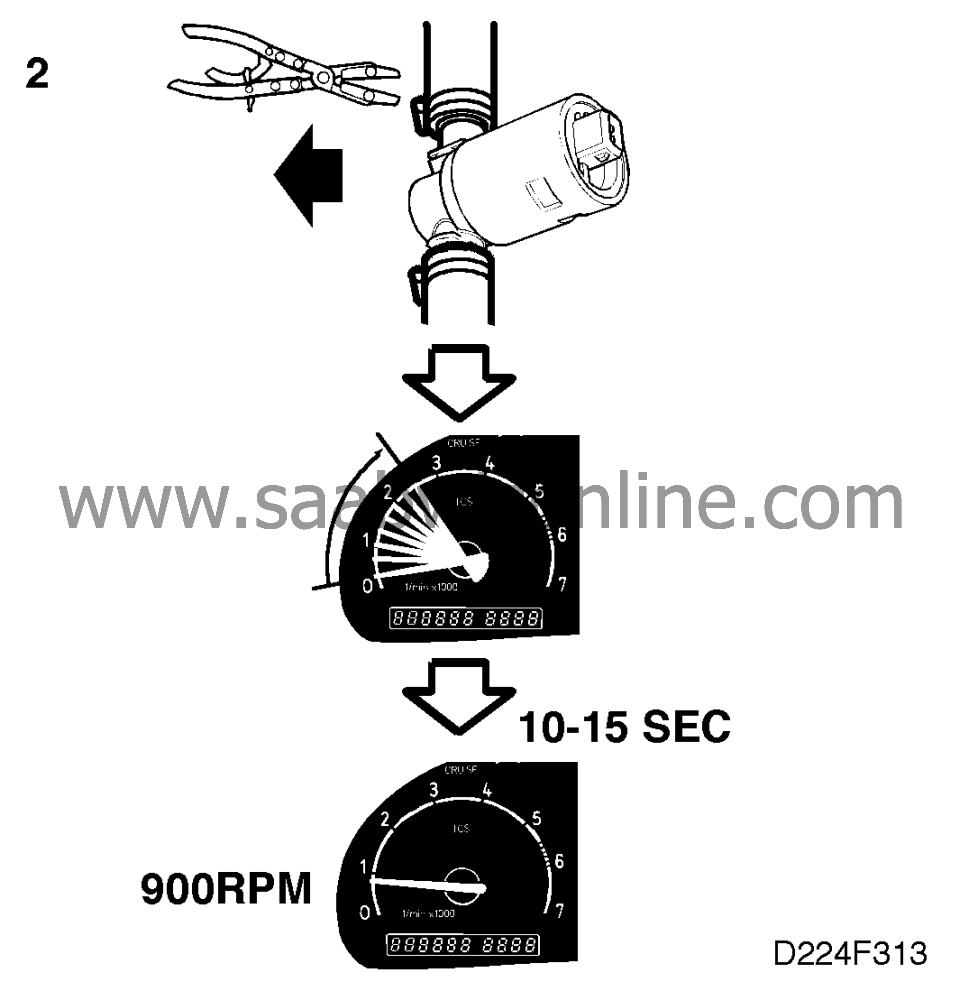
|
-
|
Remove the pliers constricting the
flow of air.
|
Idling speed should increase sharply and then stabilize in about 10-20 seconds
at the nominal speed of 900 rpm (warmed-up engine).
Functionality OK?
Continue with point 5.
Continue with point 3.
3. Check operation of the control valve
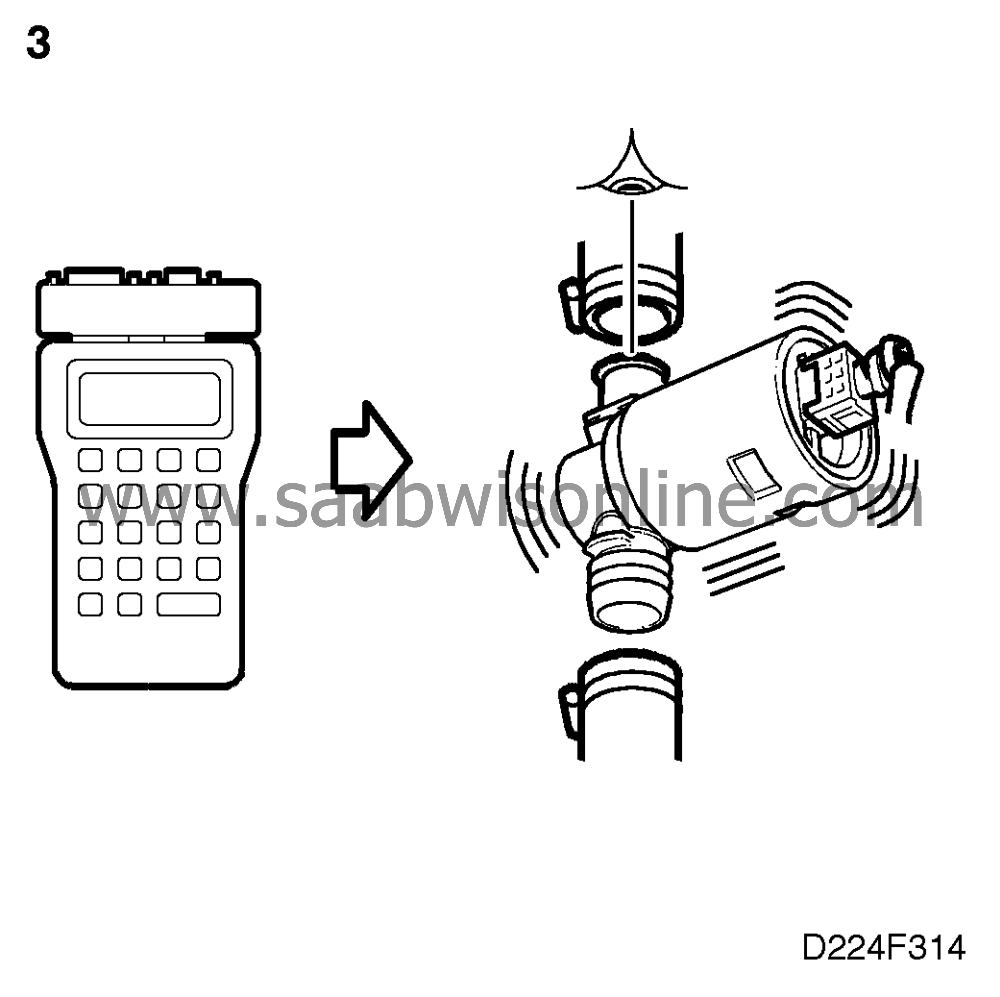
|
-
|
Disconnect the valve's air
hoses.
|
|
-
|
Remove the idle air control valve.
|
|
-
|
Plug in the idle air control
valve's electrical connector.
|
|
-
|
Connect an ISAT scan tool.
|
|
-
|
Ignition switch in ON position.
|
|
-
|
Check visually that the valve
rotates without tending to bind.
|
Is the control valve OK?
Continue with point 4.
Change the idle air control valve and then continue with point 6.
4. Check the idle air control valve switch and/or connector
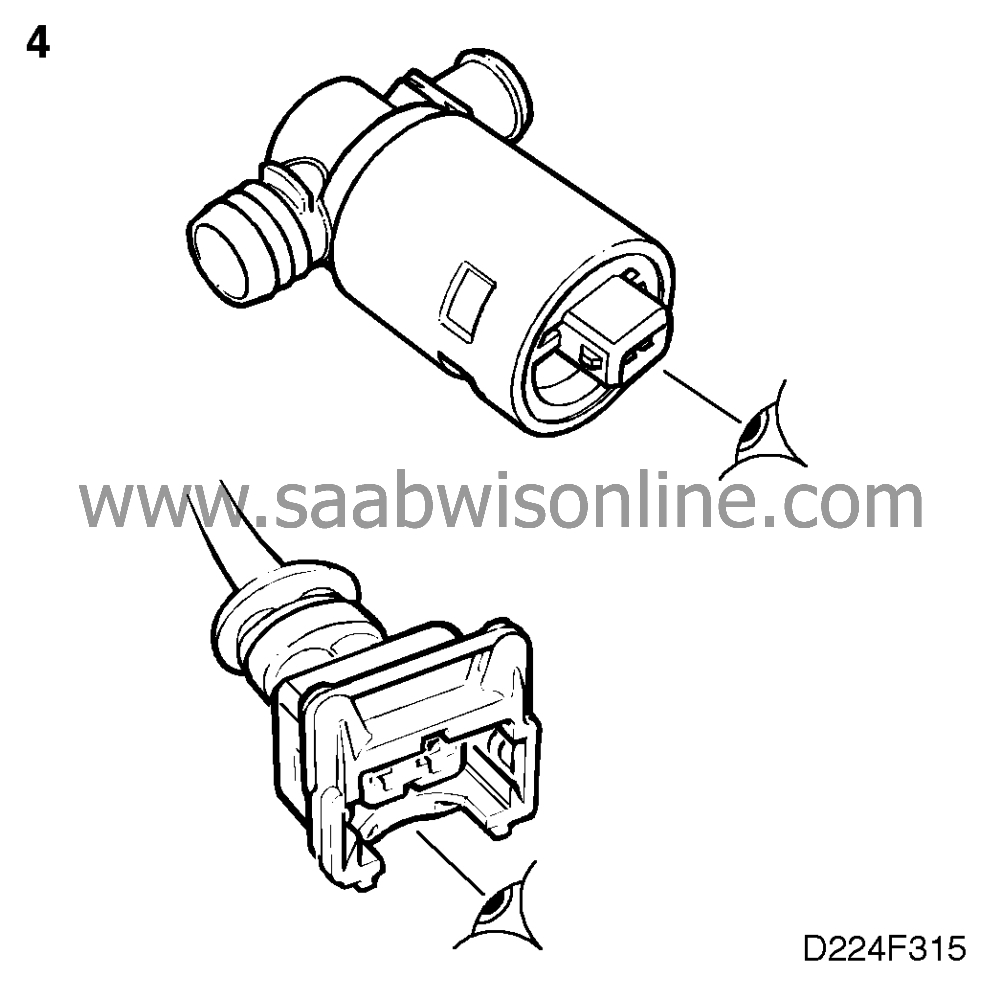
|
-
|
Carry out a visual check of the
control valve's switch and connector. If necessary, clean and grease the switch and/or
connector.
|
|
-
|
Check whether engine revs
continue to dip.
|
Does the engine still dip?
Continue with point 5.
Continue with point 6.
5. Check the engine load
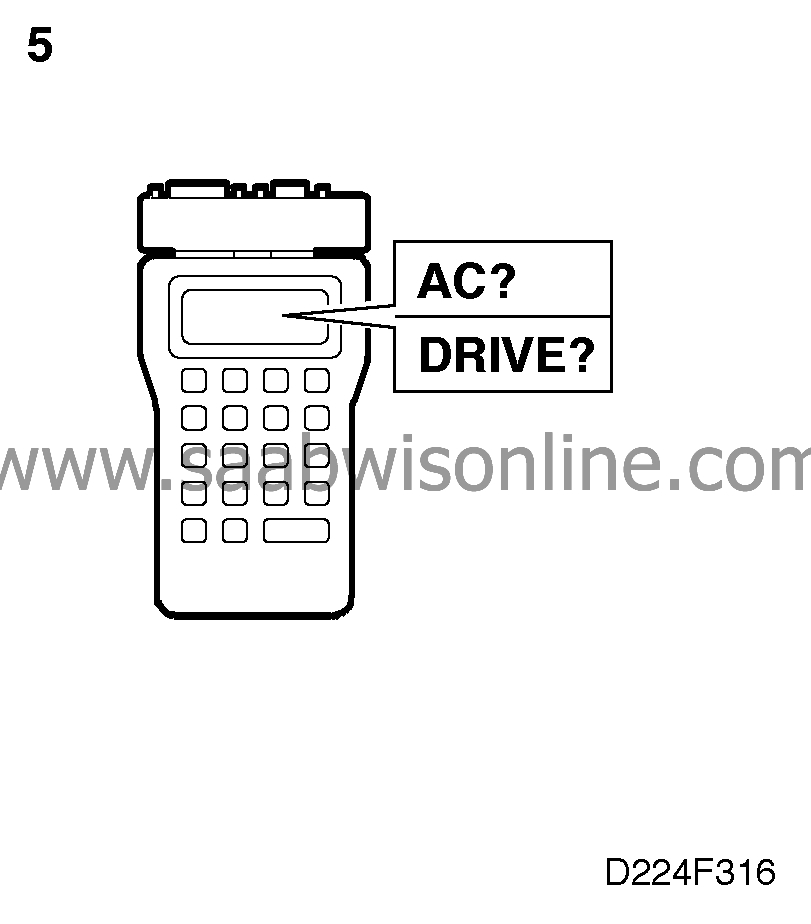
|
-
|
Check that the Trionic control
module receives the correct input signals to compensate for any changes in engine load.
Depending on the trouble, continue fault diagnosis with:
|
|
|
•
|
Fault diagnosis, DRIVE, on
 .
.
|
|
|
•
|
Fault diagnosis, other trouble. Continue as described
below.
|
|
-
|
Try changing the idle air control
valve.
|
|
-
|
Check whether the idle air control
valve works.
|
Does the engine still dip?
Continue with point 6.
Change the idle air control valve and then continue with point 6.
6. Final check
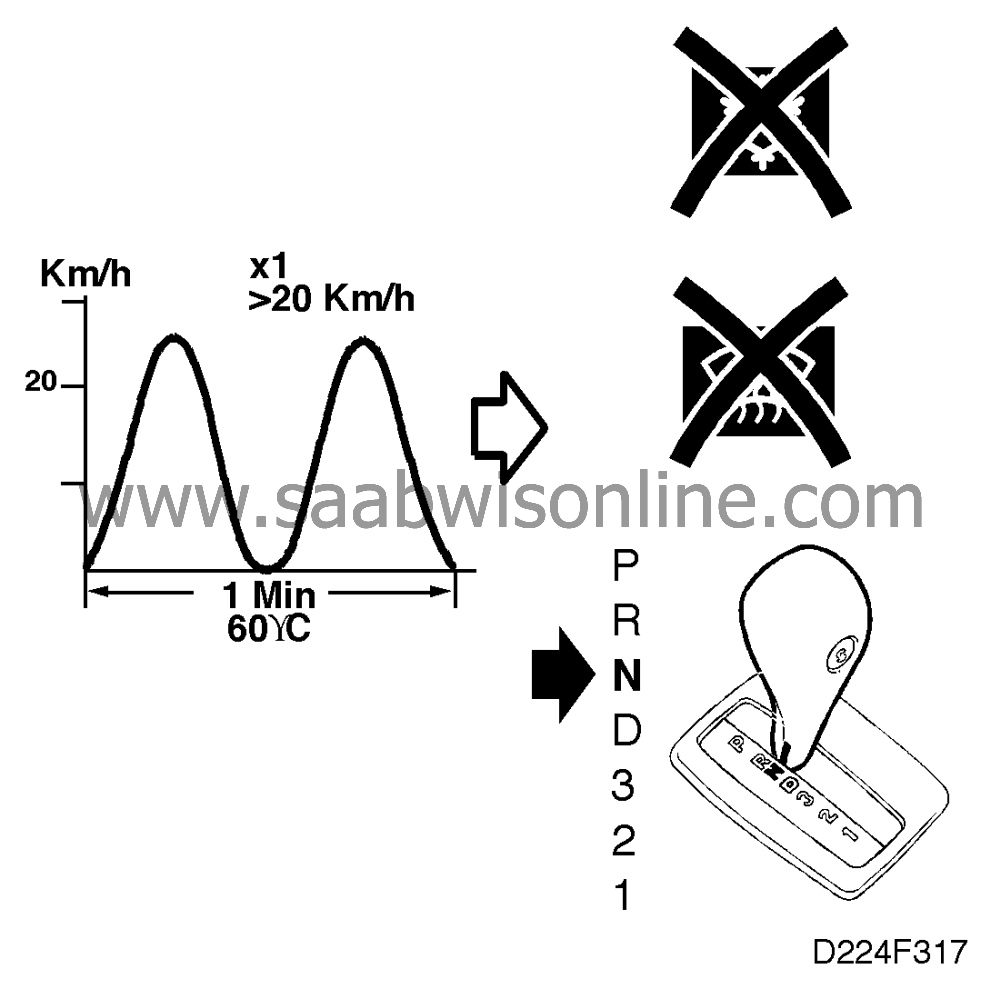
|
-
|
Perform a driving
cycle:
|
|
|
•
|
Drive the car at varying engine
loads and rpm for 5 minutes.
|
|
|
•
|
Car speed should exceed 20 km/h at some time during the driving
cycle
|
|
|
•
|
Stop the car, apply the handbrake and run the engine at idling
speed
|
|
|
•
|
Switch off the A/C and all electrical equipment. If the car has automatic
transmission, select position P. Allow the engine to stabilize its idling speed for 10
sec.
|
|
|
•
|
Switch on the A/C and all electrical equipment. If the car has automatic
transmission, select position D. Allow the engine to stabilize its idling speed for 10 sec.
Evaluation of driving cycle: Check whether diagnostic trouble codes P0505-P0507 have been
generated.
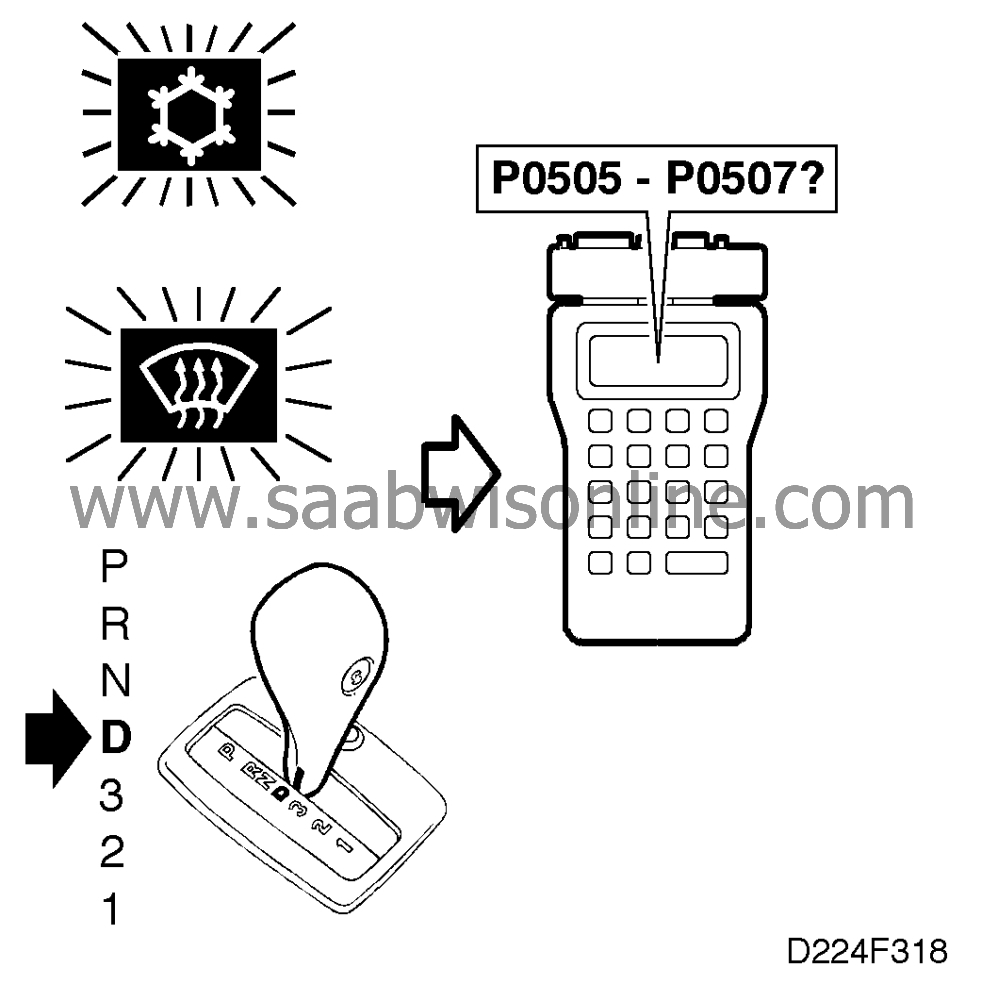
|
Has any of the diagnostic trouble codes been generated?
Proceed to
 .
.
The remedial measure taken was correct.





 .
.


